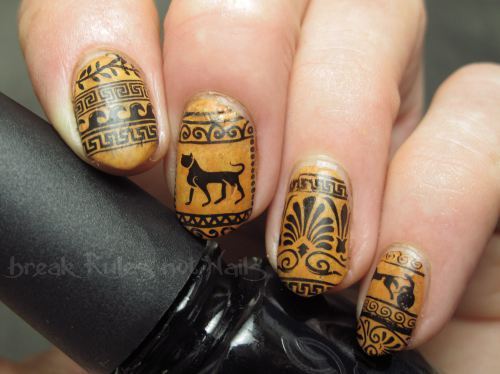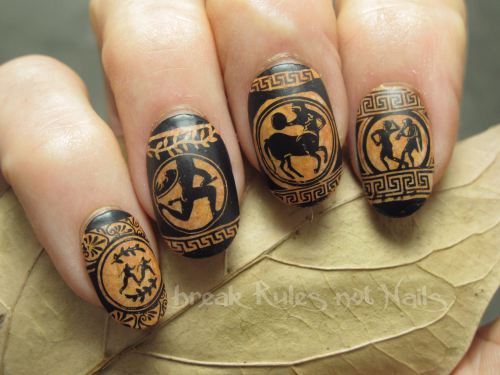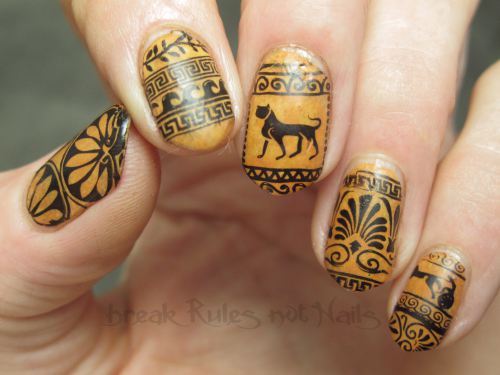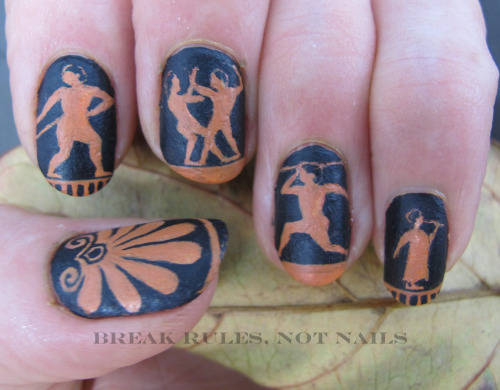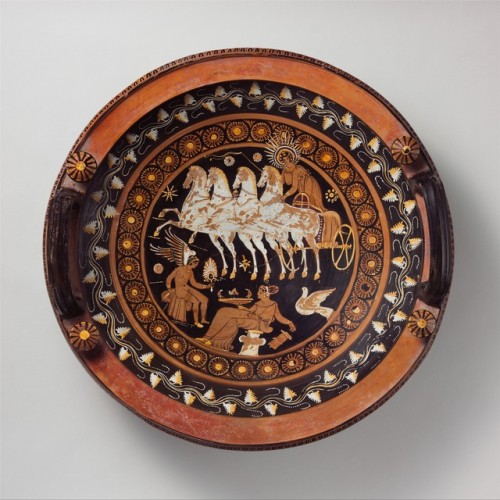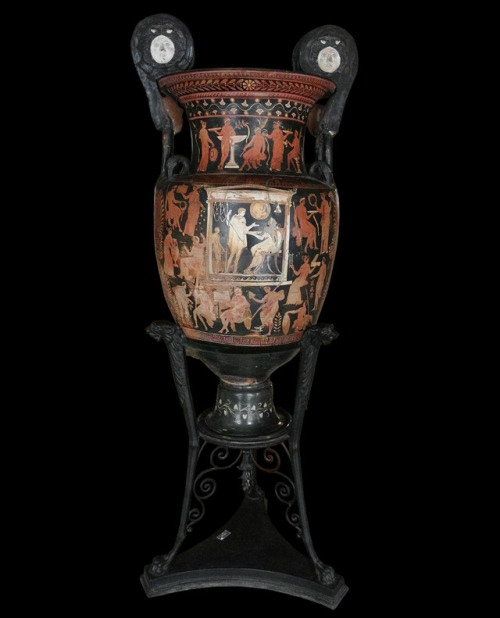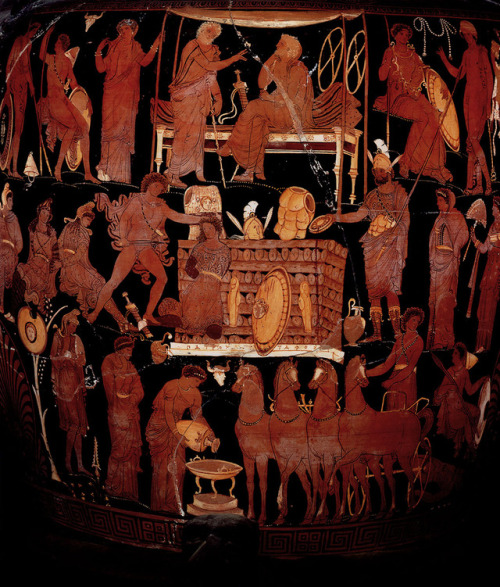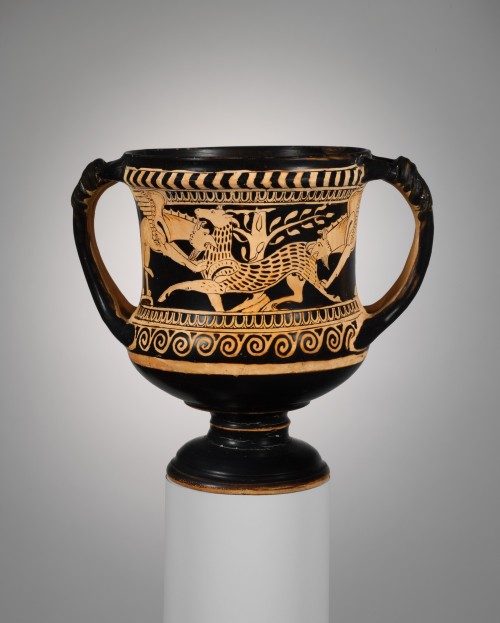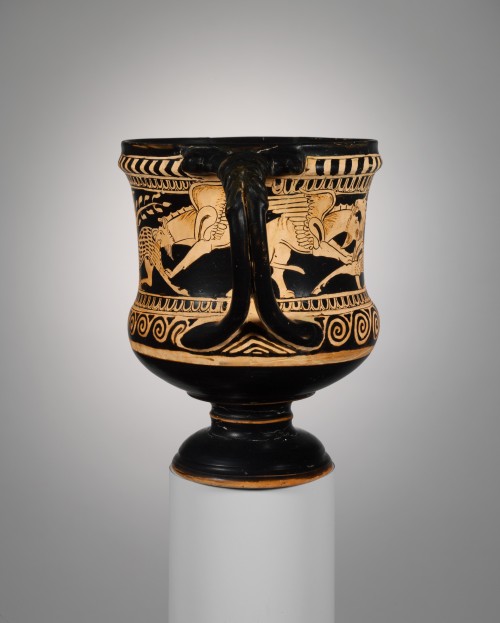#red figure
Terracotta lekanis (dish) by Stuttgart Group,Greek and Roman Art
Medium: TerracottaRogers Fund, 1969 Metropolitan Museum of Art, New York, NY
Post link
~ So-called “Vase of Patroclus”/Red-figure volute-krater.
Place of origin: Apulia
Artist: Darius Painter
Date: 340—320 B.C.
Medium: Clay
Provenance: Naples, National Archaeological Museum
(Museo archeologico nazionale di Napoli)
Post link




Painted myself as my minecraft skin with some of my things! This is self care.
Red-figure psykter, signed by Douris, ca. 500–470 BCE. London, British Museum 1868,0606.7.
This is my personal favorite piece of Greek art! Its full of peculiarities, like the satyr wearing a patterned chlamys and Thracian boots while carrying a kerykeion. He is meant to parody the god Hermes, which is something Douris tends to do.
The vessel itself is also quite extraordinary! It seems likely that it would have been filled with ice and then placed into a krater in order to chill wine. This shape, however, was only produced for a few decades, during the transition from the sixth into the fifth century.
Post link
Red-figure calyx-krater, attributed to Euphronios, ca. 500 BCE. Berlin, Antikensammlung F2180.
This is an athletic scene, and the figure to the far left is infibulating himself. This was a practice where men would tie their foreskin shut with a string known as a kynodesme (κυνοδέσμη) before they exercised out of politeness. While this practice is mostly associated with athletes, older symposiasts are also shown on pottery as infibulated.
Post link
Kantharos decorated with griffins attacking a deer. c. 325 - 300 B.C; terracotta. The Metropolitan Museum of Art.
“The subject of griffins attacking a deer has a long history and remained popular during the Hellenistic period throughout the Mediterranean area. It may be a symbol of the inevitability of death. The handles are ribbon-like and include so-called Herakles knots, a square knot symbolic of love and power in the ancient world. In the Roman Imperial period, Herakles knots were believed to heal wounds.” (x)
Post link


Two important exams to prepare for and my brain goes “we should make greek gods but like red-figure vases and stuff you know”
And here we are

